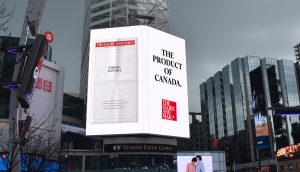PHD Canada has really gotten inside consumers’ brains with a new neuroplanning system it’s adopted to help model media plans for maximum engagement. This proprietary process and model was developed by PHD in the U.K. about two years ago with U.K.-based Neurosense, a specialist consultancy that uses cognitive neuroscientific methods to gain insights into consumer thought and behaviour using psychology, psychophysics, and fMRI (functional magnetic resonance imaging) and marketing skills.
Consumers are fitted with a helmet-mounted MRI device that takes three-dimensional pictures of their brains while they are exposed to TV, radio and print ads. By seeing which part of the brain is activated by static visual, audio/visual, or audio stimuli, Neurosense is able to ascertain the positive or negative impact of each medium.
Subjects were exposed to several different creative approaches and messages across a myriad of product categories and then creative effects were weeded out to focus strictly on the delivery channels. From there, six broad communications strategies were isolated – disrupt, activate, breakthrough, strengthen, sub-influences, and connect – to create a model that combines those strategies with other media metrics.
Fred Auchterlonie, SVP/director of client services for PHD Canada, says, ‘The neuroscience suggests there are different parts of the brain you want to stimulate in order to get certain types of communications through, whether it’s an emotional response you need or something that is [going to impact] short-term or long-term memory. It becomes a very handy tool to look across a number of different channels, think about what you’re trying to do, and narrow it down to a few channels that do that particularly well.’
PHD Canada has just begun to introduce neuroplanning to clients such as Unilever and Hershey so results aren’t likely to be seen until next year, but there have been some case studies out of the U.K. already. One for The Guardian newspaper was built around the objective of growing readership by way of its sports section. First they needed to change consumer perception of the product, which was not viewed as being credible sports editorial relative to its competition in the marketplace.
Through neuroplanning it was decided that a connect strategy would be the most effective method of overcoming a deeply embedded, long-term negative perception. TV was assessed to be the most powerful medium to use and rather than simply linking the paper with a popular sports figure as spokesperson, it was decided to approach a broadcaster about having a content-driven show put together by The Guardian. Auchterlonie says neuroplanning helped shape not just the media choice itself but also gave it some context in how to use it. The show was placed strategically on the program schedule leading into some big sporting events in the marketplace. Viewership was strong and the client expects to keep it as an ongoing show. Research also suggests that the campaign has worked to change perception among their readers.

















